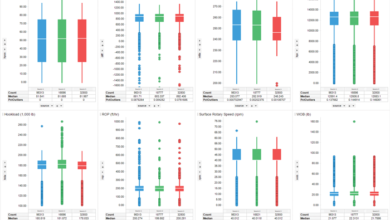Wirelines
OSHA issues memorandum on oil and gas extraction activities
On 2 December, OSHA released a memorandum for its regional administrators to provide guidance on OSHA enforcement activities in the upstream oil and gas extraction industries (NAICS 211111, 213111 and 213112).
Specifically, it provides information on:
• The scope of oil and gas drilling, servicing and production operations;
• Identification of the hazards that most frequently kill and severely injure workers in this sector;
• Standards that are most frequently cited, including Section 5(a)(l) of the OSH Act (the General Duty Clause) related to those hazards associated with worker fatalities and severe injuries;
• Discussion on how to cite oil patch 5(a)(1) citations, including the role of consensus standards and industry documents in supporting 5(a)(l) citations;
• Discussion on the identification of the citable employer;
• Applicability of OSHA’s multi-employer worksite policy to these operations; and
• References and other resources available to OSHA personnel.
Since OSHA does not have a specific standard covering oil and gas extraction, this memorandum was developed with the intent to provide information to compliance safety and health officers (CSHO’s) in order to help identify serious hazards and feasible means of abatement, and set forth the role of OSHA enforcement in the upstream oil and gas industries.
While this memorandum may be used for unprogrammed inspections, it was primarily developed as a supplement for CSHO’s conducting upstream oil and gas inspections under local and regional emphasis programs.
IOGP Publishes Report 365, Land Transportation Safety Recommended Practice
The International Association of Oil and Gas Producers (IOGP) recently published Report 365, Land Transportation Safety Recommended Practice (Version 3), which provides an effective way to manage the risks associated with land transportation. Application of the report can be a starting point for oil and gas company operations or can supplement existing company practices.
The report provides guidance on how to implement land transportation safety elements in a management system consistent with IOGP Report 510, Operating Management System Framework for Controlling Risk and Delivering High Performance in the Oil and Gas Industry.
It is also consistent with IOGP Report 459, IOGP Life-Saving Rules, developed for use in the oil and gas industry to mitigate risk and reduce fatalities. The rules focus on changing worker and supervisor behavior in the workplace by raising awareness of the activities that are most likely to result in fatalities, and propose simple actions that individuals can take to protect themselves and others.
The report also contains an Appendix A, a bow-tie model risk evaluation for land transportation.
Click here to access Report 365, Land Transportation Safety Recommended Practice.
US Coast Guard issues guidance on reporting security breaches
The US Coast Guard recently issued a policy letter to provide guidance on the criteria and process for suspicious activity and breach of security reporting, including cybersecurity events.
An owner or operator of a vessel or facility, including a MODU, is required to maintain an approved security plan and is required to report, without delay, activities that may result in a transportation security incident to the National Response Center. The policy letter also covers reporting requirements and guidance on reporting cybersecurity-related events to the US Department of Homeland Security National Cyber Security and Communications Integration Center.
Executive Order establishes protection for Bering Strait waters
In December, US President Barack Obama signed an Executive Order to establish protections for Bering Strait-area waters, which makes nearly 40,000 sq miles off-limits for future oil and gas development. This area includes the Norton Basin and portions of the St. Matthew-Hall planning areas.
The president’s order also creates a 112,300-sq-mile area, named the Northern Bering Sea Climate Resilience Area, where a task force will be required to help coordinate federal activities “focusing a locally tailored collection of protections related to oil and gas, shipping and fishing,” according to the White House. The move was anticipated but not appreciated by Alaska’s all-Republican congressional delegation, who disliked President Obama’s action in closing off more waters to drilling.
US, Canada designate vast areas of arctic off-limits to oil and gas leasing
On 20 December, US President Barack Obama, along with Canadian Prime Minister Justin Trudeau, announced that the United States is designating the vast majority of US waters in the Chukchi and Beaufort Seas as indefinitely off-limits to offshore oil and gas leasing.
Canada will also designate all Arctic Canadian waters as indefinitely off-limits to future offshore Arctic oil and gas licensing, to be reviewed every five years through a climate and marine science-based life-cycle assessment. Absent action by the incoming Administration, this action blocks all future offshore oil and gas leases in the Chukchi Sea and for all but 2.8 million acres of the Beaufort Sea, and puts 31 major underwater canyons in the Atlantic Ocean from New England down to the mouth of Chesapeake Bay off limits for drilling.
Click here to access the US-Canada Joint Arctic Leaders’ Statement.




